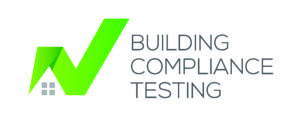Part E Compliance at Building Compliance Testing
Sound insulation is a pivotal consideration in building design and compliance, with Part E of the Building Regulations outlining the standards necessary to uphold. Developers must grasp these requirements to sidestep costly setbacks and guarantee successful sound tests. Here’s a comprehensive rundown of the top seven factors you should acquaint yourself with to ace your Part E sound tests.
1. Get to Know Part E of the Building Regulations
To comply with Part E, familiarity with the different sound insulation tests is imperative. Resistance to Sound: Approved Document E clearly delineates these requirements, with two primary tests standing out:
- Airborne Sound Insulation Test: Gauges sound insulation against airborne noise like voices or music between party walls and floors.
- Impact Sound Insulation Test: Assesses insulation against impact noise like footsteps.
Both tests are indispensable for ensuring compliance with Part E standards. It should be noted however that the specific requirements for varying project will vary – so make sure you take notes or come to talk to us.
Approved Document E offers detailed guidance on sound insulation requirements and compliance methods. The Robust Details Handbook provides pre-approved constructions for walls and floors, potentially obviating the need for sound insulation testing.
2. Recognise the Requirements in Your Projects
Part E of the Building Regulations delineates standards for sound insulation in residential buildings, necessitating pre-completion testing. This focuses on resistance to sound transmission across party walls and floors to minimise noise disturbance from neighbouring properties or common areas.
3. The Significance of Massing
Mass plays a pivotal role in sound insulation; heavier and denser materials typically offer superior sound insulation. Utilising dense blocks, thicker acoustic-grade plasterboard, and other heavy materials such as dense mineral wool for walls and floors can enhance your building’s sound insulation and reduce noise propagation through the structures.
4. Tackle Flanking Transmission
Flanking transmission occurs when sound travels along paths other than the main separating structures. Controlling flanking noise involves proper sealing, minimizing continuous linings, and using dense structures and independent linings.
5. Mechanical Separation and Isolation
Twin stud walls outperform single stud walls in airborne sound insulation due to the physical separation between the two sides of the wall. Additionally, metal studs tend to outperform timber studs. Similarly the introduction of metal frame suspended ceilings provide similar benefits.
6. Don’t Over Insulation – Designed Air Gaps Can Be Your Friend
Partially filling cavities and ceiling voids adds absorption and dampening by absorbing some of the sound energy. This helps to treat the more difficult (and more of nuisance) low frequency noise, which have longer wavelengths meaning they can pass easily through solid masses and resonate in large spaces.
However proper installation and sealing are critical for successful sound insulation tests. Acoustic sealants and pattresses should be utilised to seal any gaps.
7. Get a Specialist Involved Early Doors
A review of architectural drawings, inspections and pre-testing can help identify weak points or areas needing improvement before official sound tests, mitigating the risk of failure. Experienced acoustic consultants like Building Compliance Testing can provide invaluable guidance throughout the process, from pre-tests to final sound tests, ensuring compliance with Part E requirements.
Let Us Be Your Building Compliance Partner
Contact Us for Building Acoustics and Part E Sound Tests
If you are interested in the services of Building Compliance Testing, then we highly recommend getting in contact with us by filling out an enquiry form on our website! Or if you prefer to, you can instead phone us on this number: 01621 493 594 or email us on this address: contact@buildingcompliancetesting.com
We look forward to working with you!


